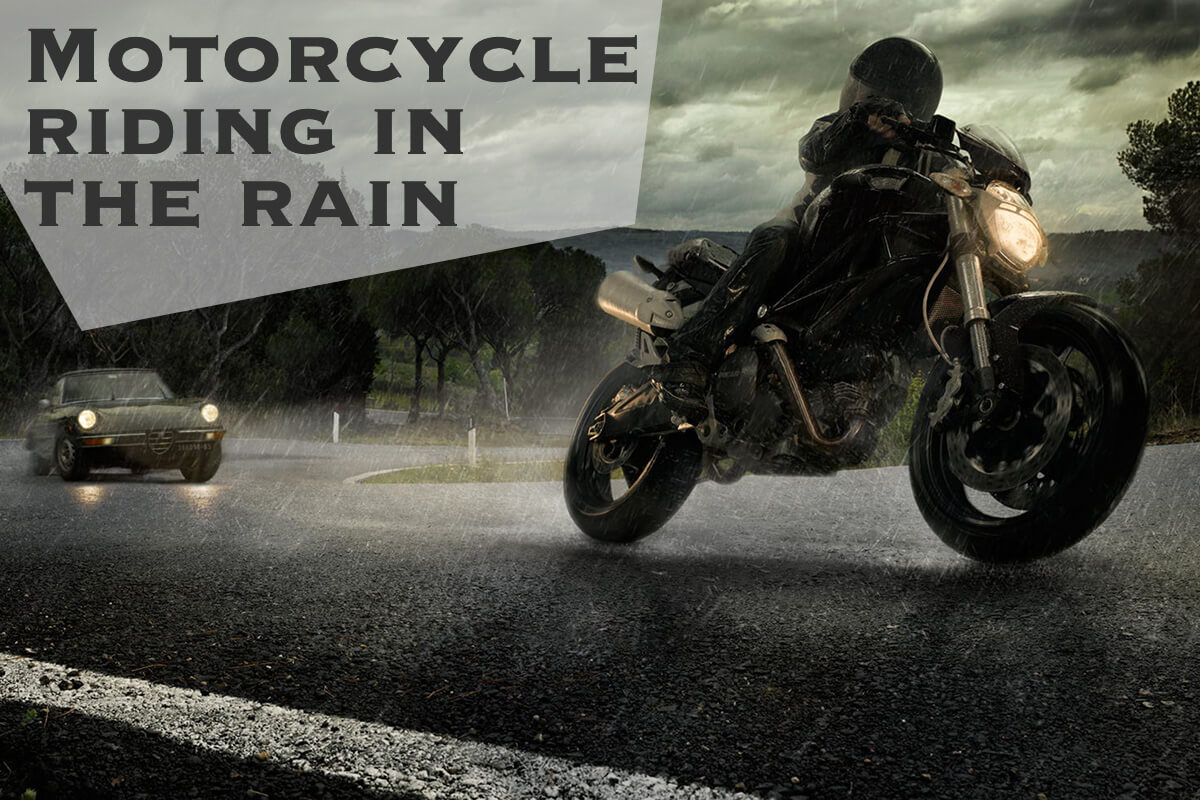Motorcycle riding in the rain
Riding a motorcycle during rainy weather is considered exciting or even romantic by some motorcyclists, for others, it's the worst thing that can happen. Either way, traveling in the rain is dangerous, not only for motorcyclists but also for motorists.
First off, check the weather forecast before you leave your house. If wet weather is coming whether you're going anywhere or not, consider staying home, or at least leaving your motorcycle at home. This will help you avoid the risk of an accident.
Despite your attitude to riding in the rain, every motorcyclist has had the experience that nothing seemed to predict precipitation, but half an hour later the sky became cloudy and heavy rain descended, making further travel very problematic. To avoid being caught unawares by wet weather, there are a few things a motorcyclist can do.
Tips for Riding a Motorcycle in Rain
- Waterproof gear. If you can't avoid riding in the rain, make sure you gear up properly. Wear a rain suit: waterproof jacket, pants, and boots.
- Visibility. Remember that rain makes it much harder for cars to see you than usual. If your outfit is all black, buy a reflective vest or other reflective accessories. Waterproof gear is great but even better is visible waterproof gear.
- Lights on. Be visible to other motorcycle riders and drivers by keeping your headlights and taillights on.
- Braking distance. Wet roads can increase braking distances by up to 25%. Make sure to break early when approaching intersections and corners. Leave more space between you and the car in front.
- Lane position. When it's wet outside, it's more important than ever to use turn signals (even if you're only changing lanes a few inches) and to stay in the lane you're in.
- Speed. Take it slow, not only can the road be wet but also slippery. Allow yourself more time to get to your destination.
- Aquaplaning. While driving on a wet surface and at speed there is a wave in front of the wheel, which the motorcycle pushes in front of itself, and the grip disappears. One sharp maneuver and you are already on the asphalt. To avoid the danger, consider that the higher the speed, the more water collects in front of the tire and the worse the traction.
- Avoid smooth surfaces. Try to avoid riding on painted surfaces, as these can be very slippery when wet. Also, bypass any metal elements such as railroad tracks and manholes. Stick to the asphalt as much as possible. If you can't avoid smooth surfaces, you should slow down and level the bike. When the wheel hits such an element straight on, without a slope, the risk of sliding becomes much lower.
- Potholes. Avoid potholes if you can. If you can't avoid them, try to drive over them slowly and steadily without making sudden moves.
- Splashes. Keep your distance from the vehicle in front of you as it can spray water onto your visor or windshield at high speeds.
- Distractions. Also, pay attention to pedestrians and roadside distractions. When visibility is poor, these can very easily lead to accidents.
- Use caution when turning. Slow down before making a turn and use the brake and the gas at the same time to maintain control. Remember that the motorcycle can easily skid when turning, so do not lean in until you are sure it is safe for you and your bike.
- If your motorcycle starts to skid or slide out of control, let go of both the brake and gas at the same time until you regain control. Try to avoid breaking because this can result in a loss of control or can cause your front wheel to lock up.
- It's not worth the risk. If you can't see the road ahead of you, stop riding immediately. Ride safely!
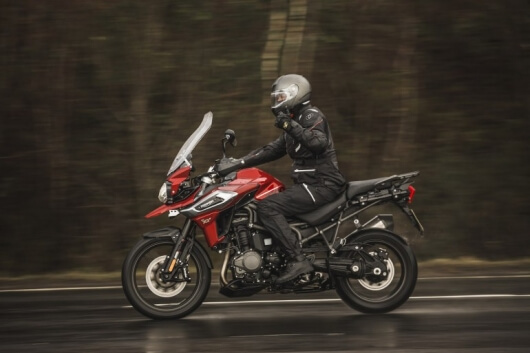
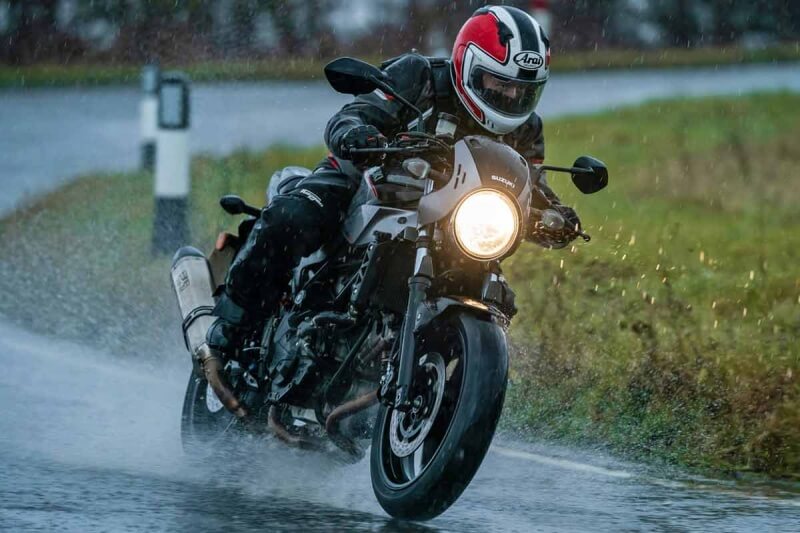
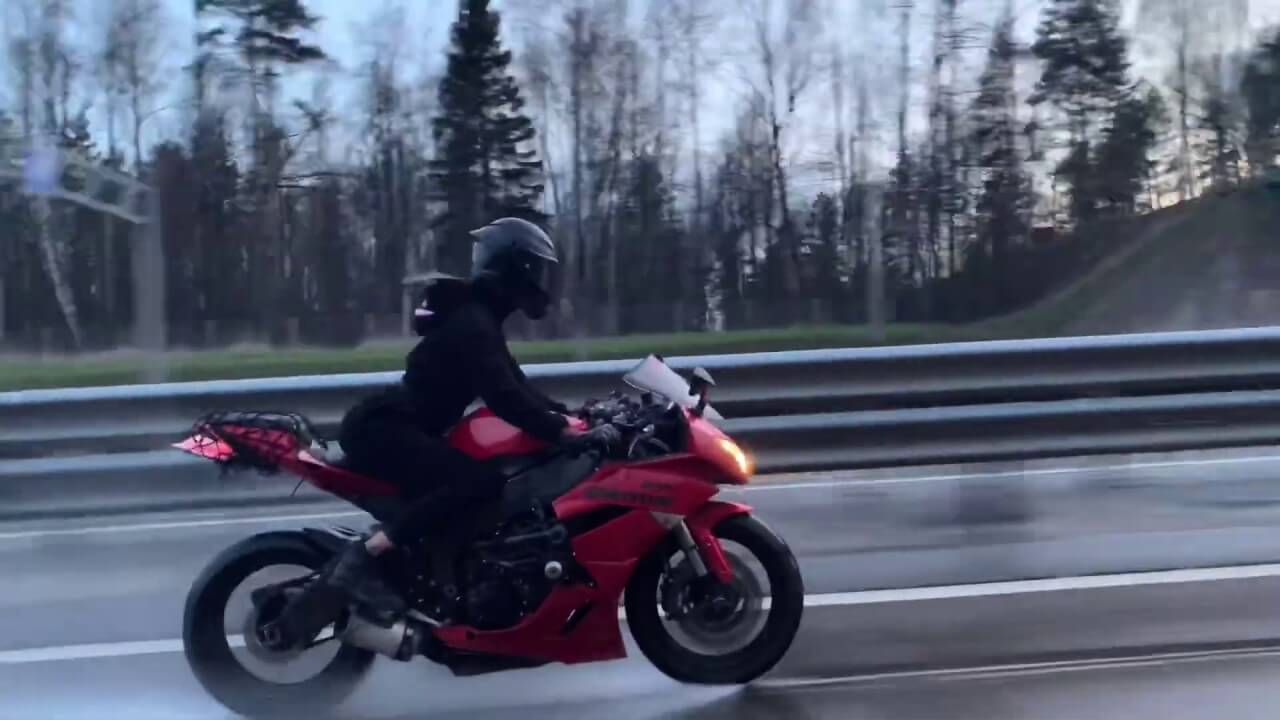
Final Words
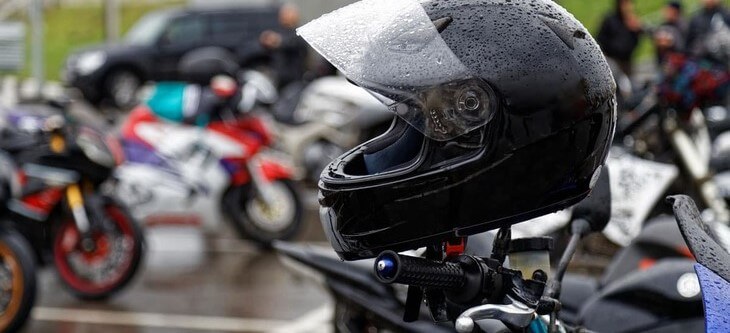
In conclusion, when riding a motorcycle in the rain it is important to take all necessary precautions for safety. Take your time and be mindful of the other drivers on the road. Remember that they may not be as cautious as you are. The ability to control the bike at minimum traction will give you extra confidence in your abilities on dry roads. However, don't exaggerate the limits of your abilities. Look out for yourselves. Be sure to drive with caution and enjoy the experience while being safe! Thank you for reading!

